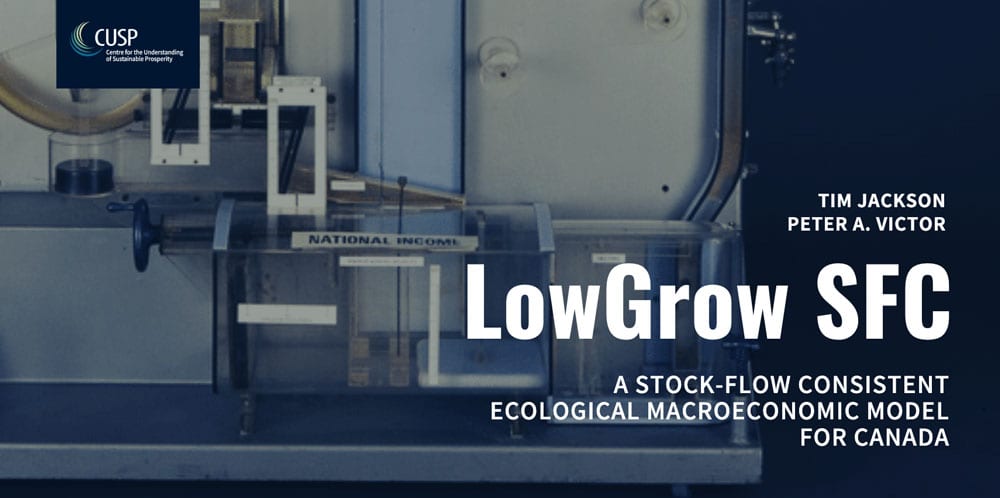LowGrow SCF—A stock-flow-consistent ecological macroeconomic model for Canada
Tim Jackson and Peter A. Victor
CUSP Working Paper Series | No 16
Summary
This working paper presents a stock-flow consistent (SFC) simulation model of a national economy, calibrated on the basis of Canadian data. LowGrow SFC describes the evolution of the Canadian economy in terms of six financial sectors whose behaviour is based on ‘stylised facts’ in the Post-Keynesian tradition. A key feature of the model is its ability to provide a systematic account, not only of economic and financial variables, but also of key environmental and social dimensions of the economy. In particular, it tracks the evolution of carbon emissions and the distribution of incomes over time, under various policy assumptions.
The working paper describes in detail the structure of the model, its behavioural assumptions and the calibration of its variables and parameters. It develops two new performance indicators to track the progress of the economy: an environmental burden index (EBI) to describe the environmental performance of the model; and a composite sustainable prosperity index (SPI) based on a weighted average of seven economic, social and environmental performance indicators.
We use the model to generate three very different stories about the future of the Canadian economy, covering the half century from 2017 to 2067: a Base Case in which current trends and relationships are projected into the future, a Carbon Reduction Scenario in which measures are introduced specifically designed to reduce greenhouse gas emissions, and a Sustainable Prosperity Scenario which incorporates additional measures to improve environmental, social and financial conditions across society.
Only in this third scenario, with its much slower rate of economic growth, do we see an overall improvement in performance as indicated by the SPI. Contrary to the accepted wisdom, the results indicate the feasibility of improved environmental and social outcomes, even as the growth rate declines to zero.
- The full paper is available for download in pdf (2.7MB) | Jackson, T and P A Victor 2019. LowGrow SFC: a stock-flow-consistent ecological macroeconomic model for Canada. CUSP Working Paper No 16. Guildford: University of Surrey.
- An interactive version of the model can be accessed via cusp.ac.uk/LowGrowSFC.









